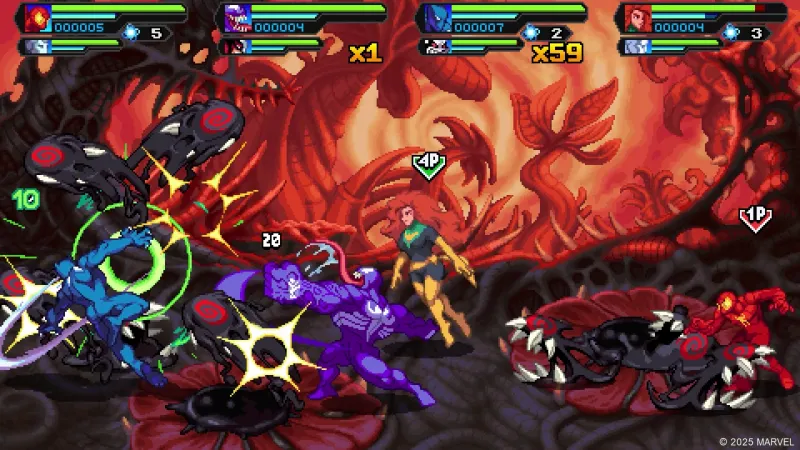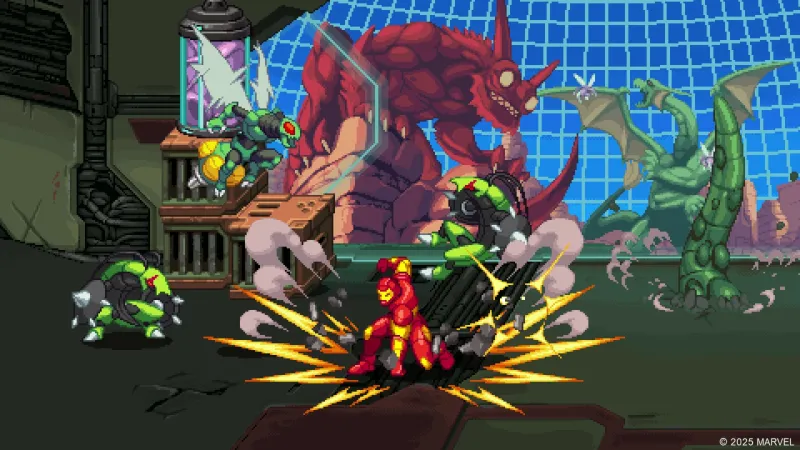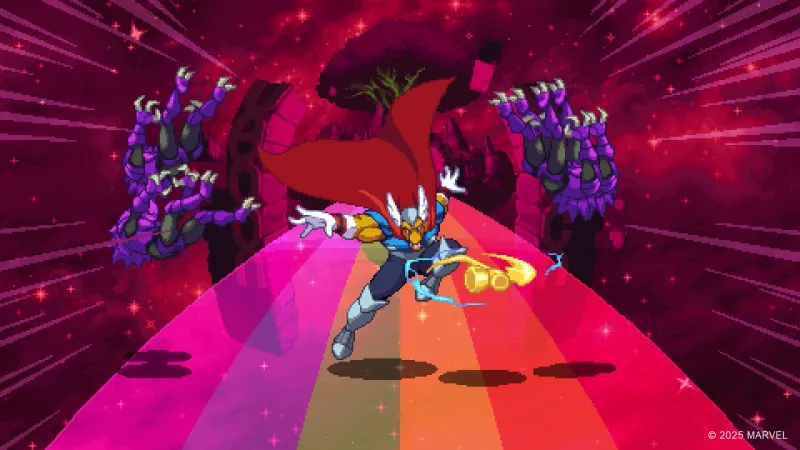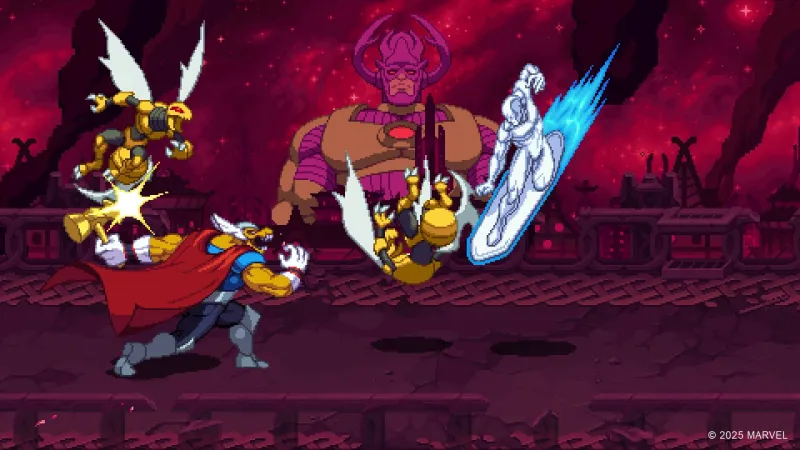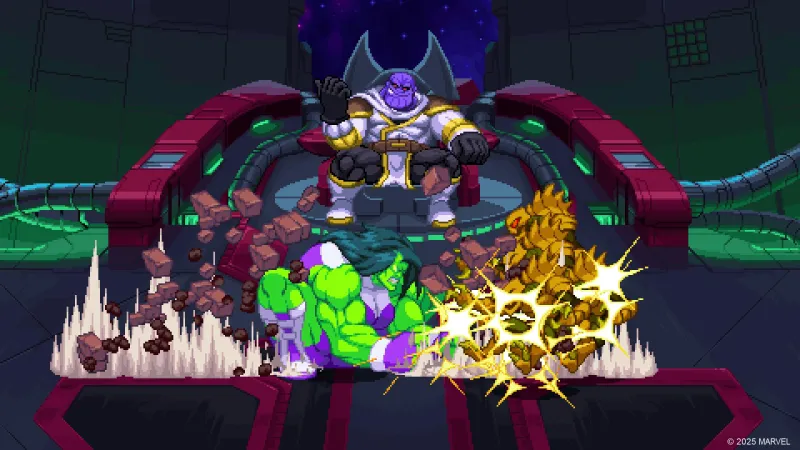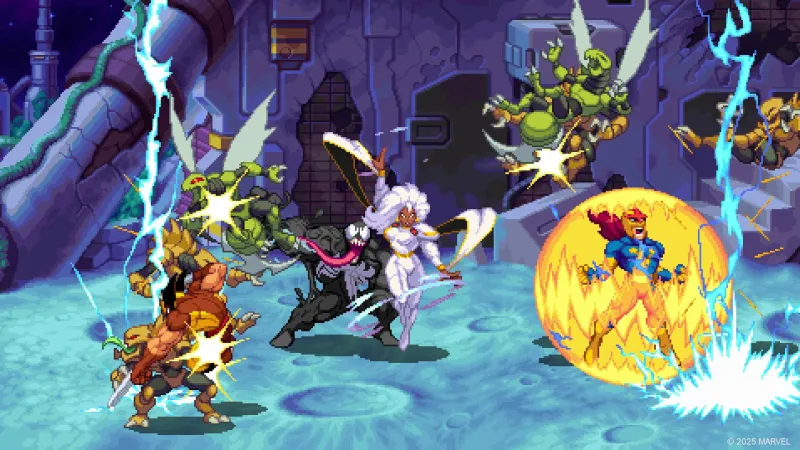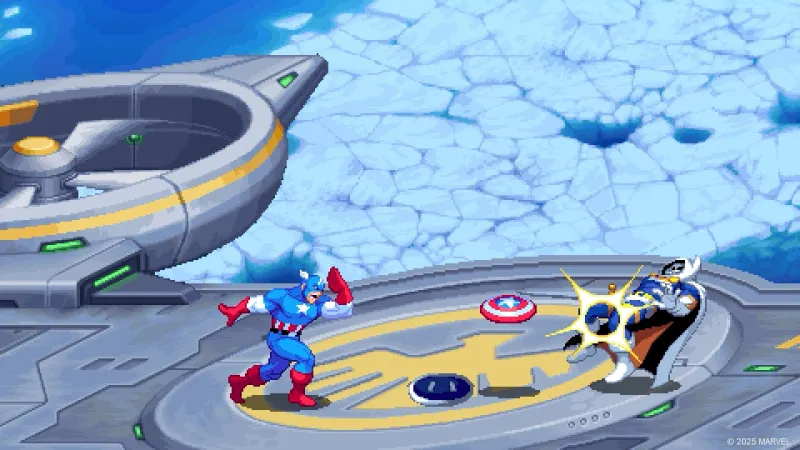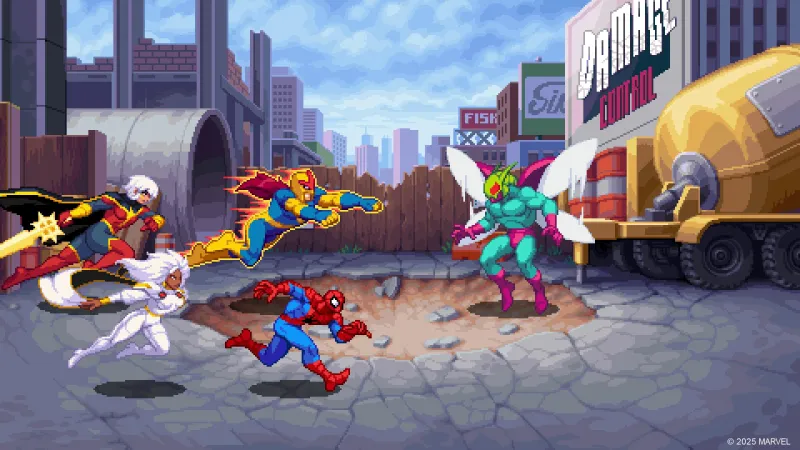Reading List
The most recent articles from a list of feeds I subscribe to.
The Polls Are Closed For The Reader Game Of The Year 2025 Vote
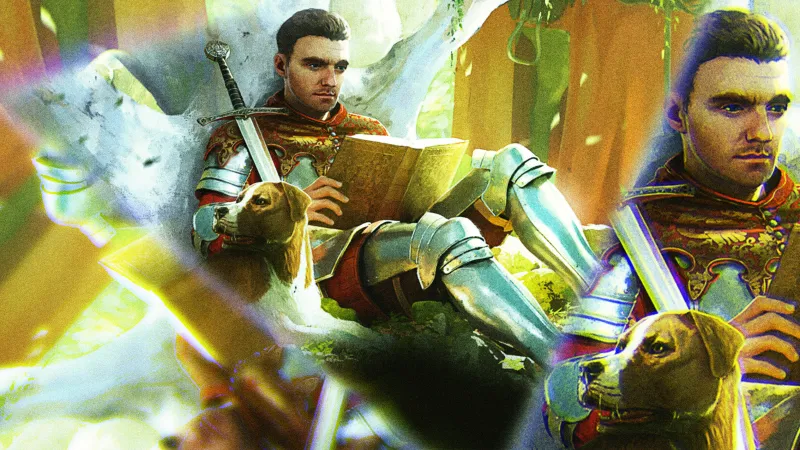
Update, 12/1/25:
The polls are now closed! Thanks for voting and look out for the results in the next issue of the magazine!
Original story, 11/13/25:
The year is coming to a close, which means it's time yell at each other over Discord and decide the best game of 2025 to crown the ultimate champion. Will it be Clair Obscur: Expedition 33? Or maybe Hades II? What about Shadow Labyrinth, the Pac-Man search action game? We will be sharing our picks for game of the year and other end-of-year awards in the next issue of Game Informer magazine with (you really think I would spoil it here?) on the cover, but we also want to hear from our readers and share your favorites of 2025.
To do that, we ask that you fill out the poll below. Send us your personal list of 2025's five best games, and we will gather everyone's information and share the result in the next issue. We use ranked positional voting – the Borda count method – to gather the results. You have until the end of November to submit your list. We can't wait to see how your picks compare to ours!
Note: Google has been reporting some intermittent issues, so if you're having trouble seeing the form, please check back later. The poll will be live until the end of November.
Marvel Cosmic Invasion Review – Making The Dream Work
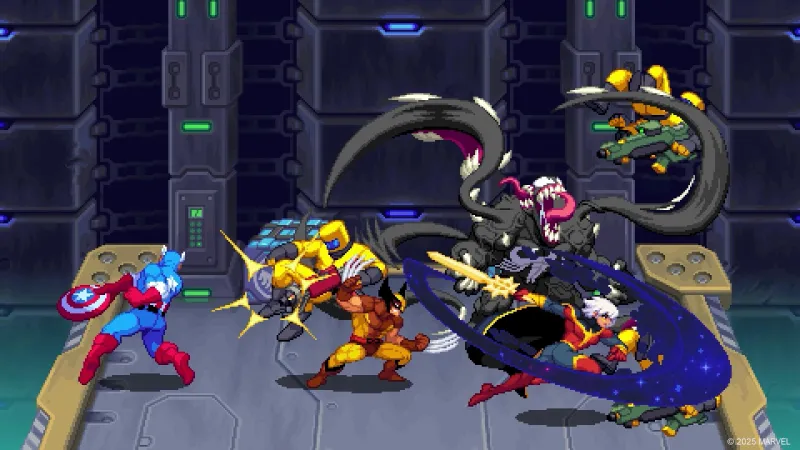
Reviewed on:
PlayStation 5
Platform:
PlayStation 5, Xbox Series X/S, PlayStation 4, Xbox One, Switch, PC
Publisher:
Dotemu
Developer:
Tribute Games
Release:
Rating:
Everyone 10+
Tribute Games, creators of Teenage Mutant Ninja Turtles: Shredder's Revenge, know how to spice up the easily bland beat ‘em up genre like few studios can, and Marvel Cosmic Invasion is no exception. Injecting tag-team mechanics reminiscent of the Marvel tag fighters adds a fun layer of strategy and chaos to this intergalactic smackdown, creating a retro-inspired treat comic fans shouldn’t miss.
When the evil Annihilus hatches a plot to take over the galaxy, a collective of heroes, from iconic names like Spider-Man, Captain America, and Wolverine to space-faring saviors like Phyla-Vell, Nova, and Silver Surfer, stand up to oppose him. As a comic book fan, I appreciate the roster’s diversity in featuring names less-utilized in games like She-Hulk, Beta-Ray Bill, and the more modern Cosmic Ghost Rider. The sprites look great and are animated just as well, and voice performances capture the endearingly cheesy bombast more reminiscent of the source material rather than their TV/film counterparts.
Marvel Cosmic Invasion’s story campaign is a succinct but fun romp through comic lore, featuring varied locations on Earth and beyond. I got a kick out of clipping the wings of Sauron in the Savage Land and taking on Knull and his symbiote army on Klyntar, and the stages are chock full of fun references for comic fans, new and old. The combat retains the genre’s appealing approachability while boasting enough mechanical depth to be more engaging than most contemporaries. Pummeling and air-juggling scores of A.I.M. goons or alien bug warriors feels great, but the kicker is tagging in a partner for a quick assist attack to extend combo strings. This tandem action is simple to execute yet consistently satisfying to pull off. I also like how stage hazards and enemies, particularly the tough boss battles, offer entertaining tests of your defensive abilities, such as blocking, dodging, and parrying.
Characters feel mechanically distinct and true to themselves, and their special abilities encourage strategic play. I love tossing Cap’s shield to ricochet off multiple targets or hurling Beta-Ray Bill’s hammer, Stormbreaker, which spins independently and can stun-lock foes indefinitely until it's recalled. Telepathically tossing threats into pits as Phoenix always feels empowering, and Rocket’s randomized roster of grenades is a chaotic element of chance. The ability to fly, utilized by heroes like Storm, Iron Man, and others, is a nice remedy for the historically pesky flying enemies.
Mindlessly obliterating everything that moves yields some success (mostly when playing with others), but I appreciate how the sheer number of threats that sport their own effective defenses pushed me to learn my characters and play more thoughtfully. Like fighting games, finding your "mains" becomes key after sampling their various charge attacks, launchers, defensive moves, and special attacks. Though I enjoyed playing as every hero to some degree, Captain America, Spider-Man, Phyla-Vell, Cosmic Ghost Rider, and Silver Surfer became my standouts. However, and to the game's credit, there's no real wrong answer when it comes to choosing a hero; they're all fun in their own, unique ways.
Optional stage challenges effectively encourage a mastery of certain moves and strategies. The reward of unlockable bonuses, like character palette swaps, music tracks, and lore entries, is a sufficient carrot to dangle. Leveling up heroes through play improves their stats and unlocks new passive abilities, adding a nice sense of progression and growth to a typically stagnant genre. I like using my powered-up favorites to overcome tougher adversaries.
Swapping characters and mastering tag team synergies also makes this one of the most enjoyable brawlers I’ve ever played alone, but that’s still not the optimal way to experience this game. Believe it or not, beat ‘em ups are more fun with other people, and having four players controlling eight heroes leaping in and out of battle at once is a raucous blast, whether playing locally or in the well-implemented drop-in/drop-out online play.
Marvel Cosmic Invasion follows in the footsteps of Shredder’s Revenge by offering a smartly modernized take on the arcade games of yesteryear. It’s not the deepest package, nor does it completely shatter this genre’s reliable mold, but anyone bearing a nostalgia for the Marvel arcade brawlers of old will have a great time smacking around villains as Earth’s – and the galaxy’s – mightiest heroes.
Score: 8.5
The Top 10 Nintendo Switch 2 Games
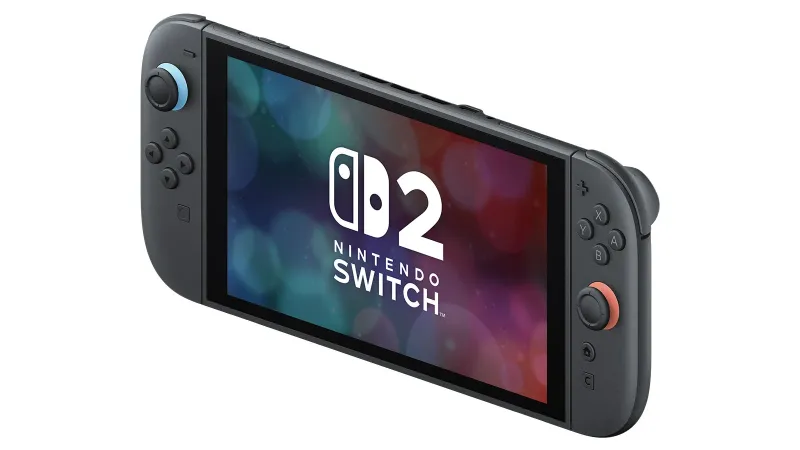
Nintendo’s latest console has only been in our hands for about six months, but it has been hugely successful. But more important than how it is selling is how many good games it already has. Along with the full Switch 1 library playable on the system, there are plenty of great native Switch 2 games, and more slated for the rest of the year. Below you will find a top 10 of our favorite Switch 2 games (and one Switch 1 game that you should play on Switch 2).
Please note that while the list below contains 10 entries, we aren’t ranking them. If a game has made it this far (and managed to stay here), it’s a must-play, period. As such, we’ll be listing entries in chronological release order. Also, with future updates, you’ll find a rundown of previous entries at the bottom of the list. While those titles have gotten bumped over time, they are still all great games in their own right and worth exploring if you’re already caught up on the latest hits.
Here are Game Informer’s picks for the top 10 games on Switch 2:
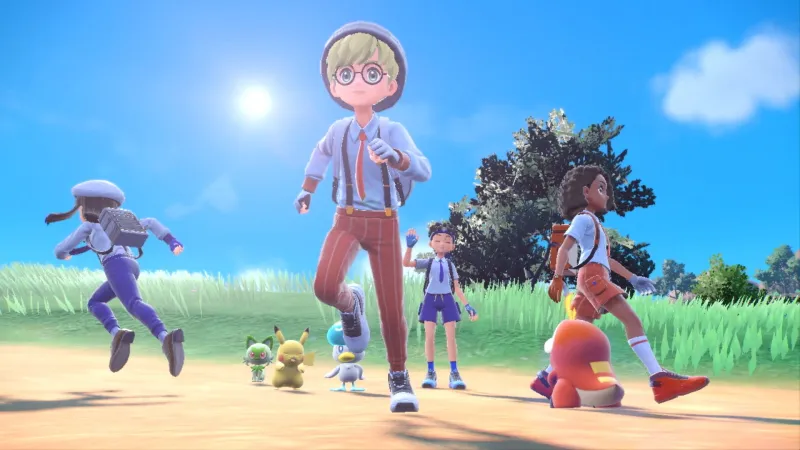
Pokémon Scarlet & Violet
Pokémon Scarlet & Violet is the only game on this list that does not have a native Switch 2 version. We are admittedly giving it special treatment by offering it a spot here, but it is arguably the Switch game that most benefits from the updates offered by Nintendo’s new hardware. When it was released in 2022, we could see there was a good, novel Pokémon game hidden behind its myriad technical issues, and playing it Switch 2 finally elevates it to where it should have always been. | Our Review
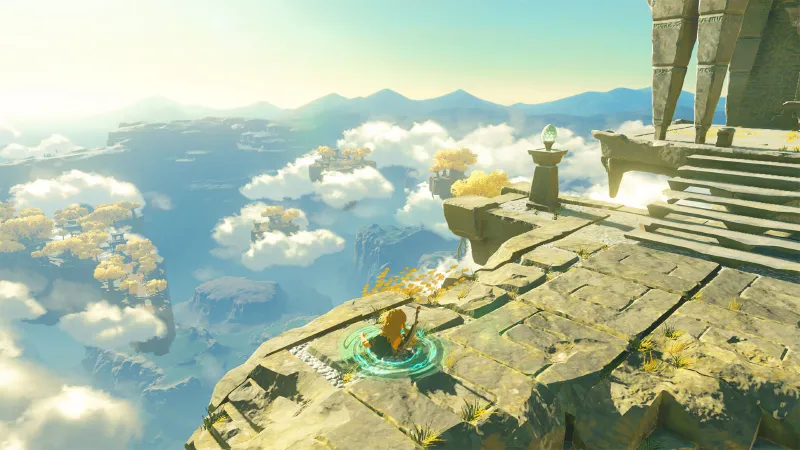
The Legend of Zelda: Tears of the Kingdom - Nintendo Switch 2 Edition
Tears of the Kingdom is a masterpiece, as is the game that came before it, Breath of the Wild. Its open world is vast and interesting, making it embarrassingly easy to get lost in its adventure. If you happened to skip the previous Nintendo generation and want to play the best Nintendo has to offer, you can’t go wrong with either the Switch 2 upgraded versions of Breath of the Wild or Tears of the Kingdom, but we’re giving the most recent of the two the edge thanks to the creativity afforded by Ultrahand. | Our Review
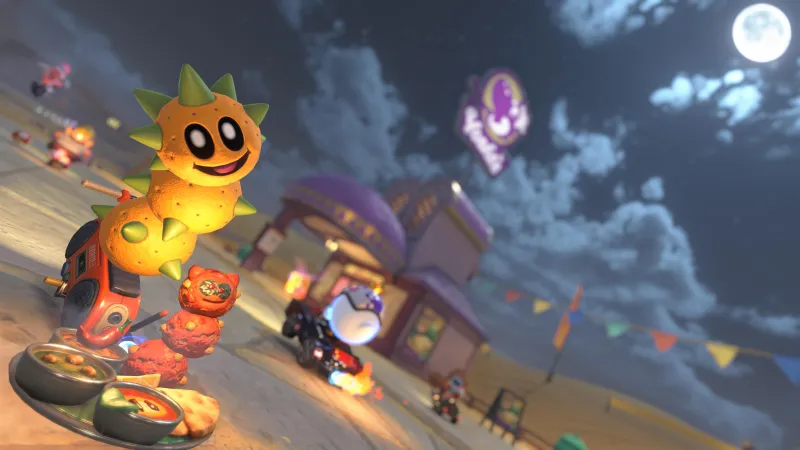
Mario Kart World
It may be illegal to own a Nintendo console without a copy of its accompanying Mario Kart. Thankfully, the latest entry, which was available day one for the Switch 2, is a worthy entry into Mario’s racing canon. New abilities make it a blast to play alone or with others, and the open world offers fun distractions when you’d rather drive around alone. Throw in arguably the best Rainbow Road in the series, and you have a game that will undoubtedly endure for years to come. | Our Review
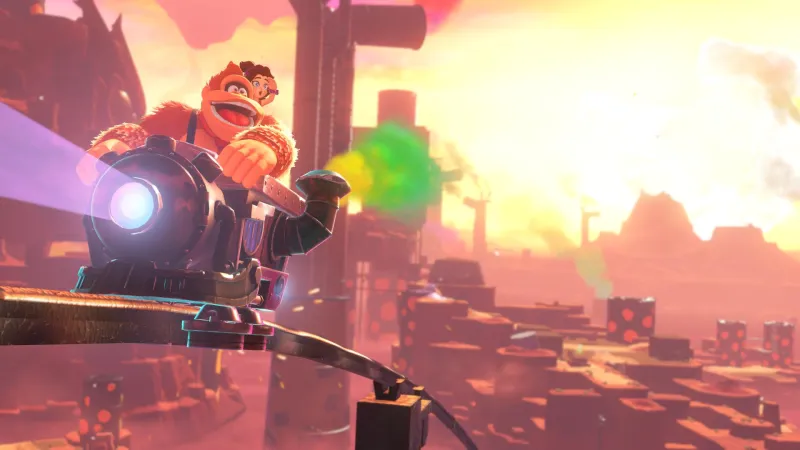
Donkey Kong Bananza
Donkey Kong is no stranger to starring in his own games, but Bananza is the biggest and most bombastic adventure the ape has ever experienced. Diving deeper and deeper into the world is rewarding, and the ability to destroy just about everything never gets old. Bananza simply has that secret, undefinable sauce that Nintendo is so good at creating, where playing the game is just a joyful experience. We highly encourage players to see the game to the end, as the conclusion is the ecstatic highlight of the whole experience. | Our Review
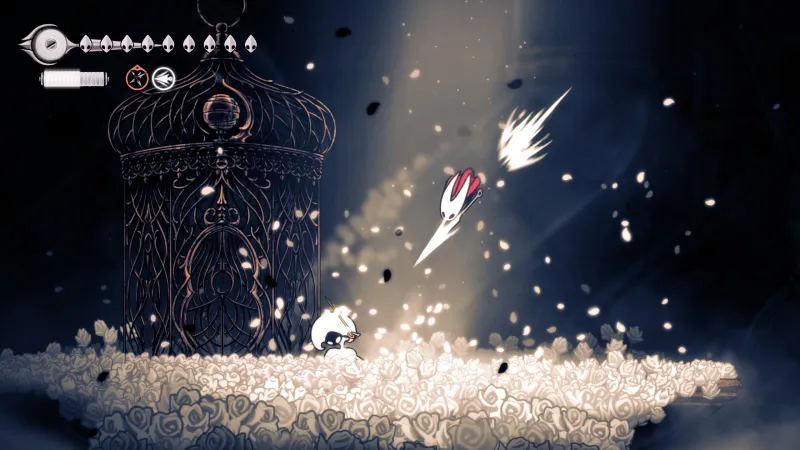
Hollow Knight: Silksong
The wait for Hollow Knight’s sequel was long, but worthwhile. Silksong is the result of a talented developer deciding that its planned DLC is worthy of being a much larger, full game, and it took the time to bring it to fruition. When we finally got the game in September, we found an incredibly challenging but undeniably rewarding adventure brimming with secrets. The Switch 2 version is particularly nice with high frame rates and, of course, the Switch 2’s portability. | Our Review
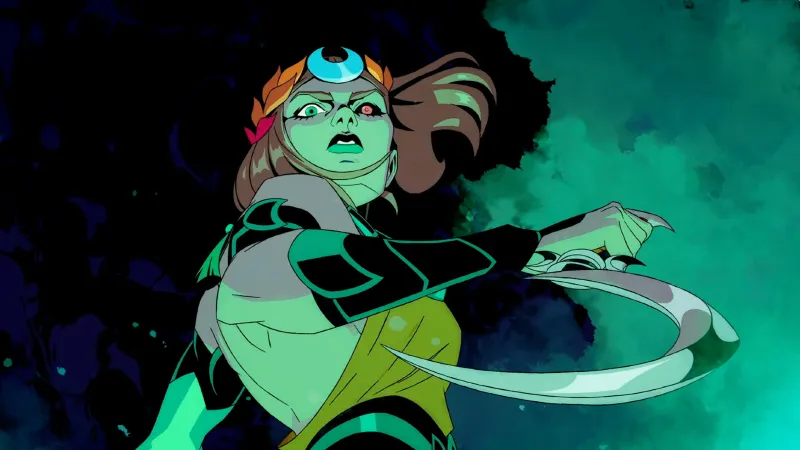
Hades II
We awarded Hades II the rare 10/10 Game Informer review score, a distinction we don’t take lightly, for good reason. The Hades follow-up from developer Supergiant takes what was so successful about the original game, and iterates on all of its elements for a new adventure with a new protagonist who has all-new abilities and motivations. Playing as Melinoë is a blast, the game looks beautiful, and it sounds even better. | Our Review
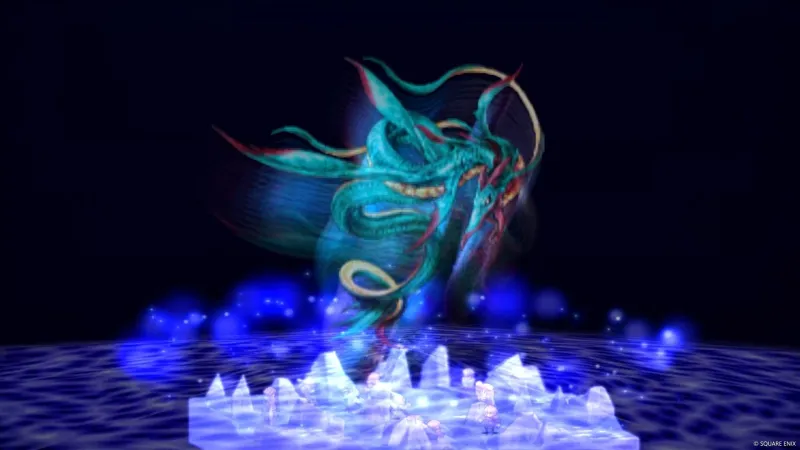
Final Fantasy Tactics – The Ivalice Chronicles
Final Fantasy Tactics has always been a fantastic game and is often cited as the best spin-off of the franchise. The remake (or maybe it’s a remaster – the definition is muddy) proves that the original’s ingenious design holds up after all these years, and the new additions, though sparingly included, are worthwhile. It may not be the first time Final Fantasy Tactics has been portable (its PSP port and the Game Boy Advance follow-ups are also very good), but we’re grateful to have an updated version of this classic on Nintendo’s platform. | Our Review
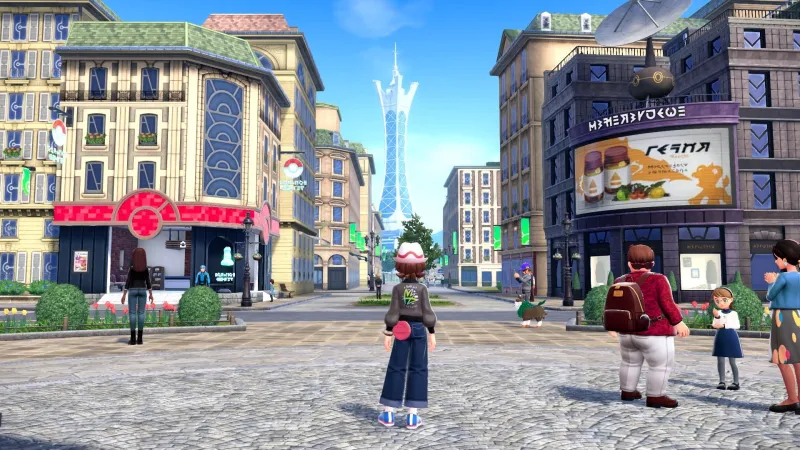
Pokémon Legends: Z-A
Perhaps it’s surprising to feature multiple Pokémon games on a contained list of our favorite Nintendo games, but there is a reason it is literally the most successful intellectual property of all time. While Scarlet & Violet offer something closer to a traditional Pokémon experience, Legends: Z-A successfully infuses more action and freedom into the historically turn-based series. | Our Review
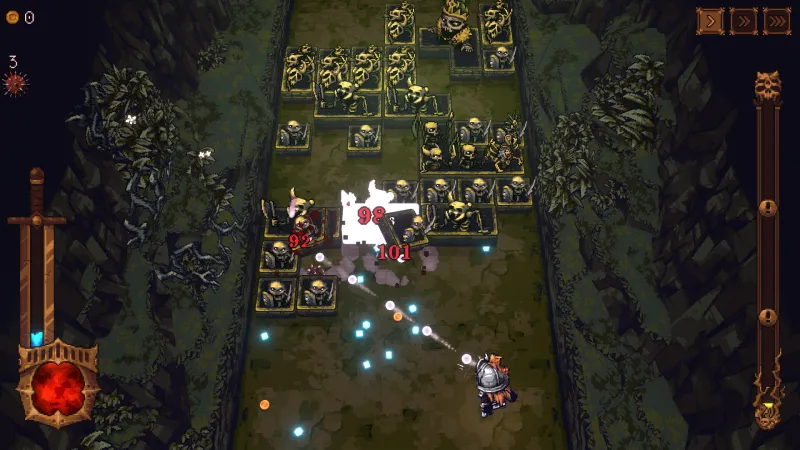
Ball x Pit
A common refrain among Ball x Pit players is frustration. The game isn’t annoying or unfair – it’s just very difficult to stop playing. It is a member of the burgeoning genre of games taking clear inspiration from Vampire Survivors. In it, you play a modern take on the classic arcade game, Breakout, where bouncing balls eliminate enemies as you progress upward. It’s an incredibly replayable and engaging system that is buoyed further by the loop of building out a town between runs. | Our Review
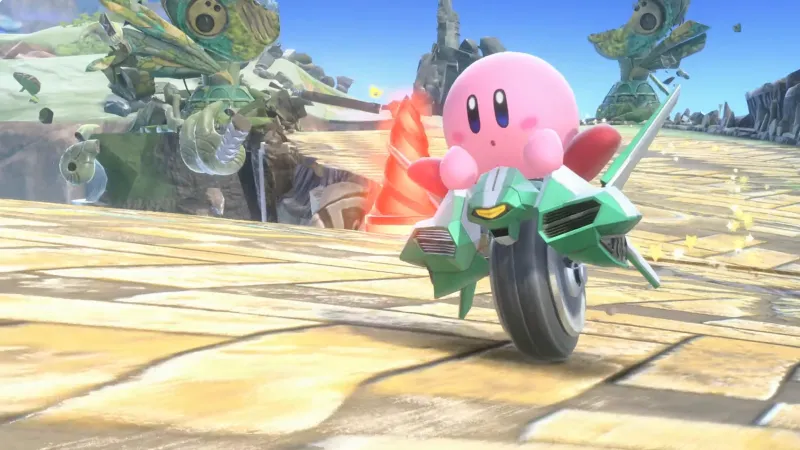
Kirby Air Riders
In 2003, Super Smash Bros. and Kirby creator Masahiro Sakurai released a racing game for GameCube that became a bit of a cult classic. Its one-button racing mechanics were odd, but compelling, but we never imagined it would receive a sequel. Now, in 2025, on Nintendo’s latest console, Kirby Air Riders is here, and it is full of the Sakurai action, chaos, and charm that have come to define his engaging style. We may not have a native Switch 2 Smash Bros. yet, but Kirby Air Riders has the style and tone of the fighting game, but in a different genre. | Our Review
For more lists about the best games on other platforms, check out our lists of the top 10 games on PlayStation 5, Xbox Series X/S, PlayStation 4, Xbox One, and Switch.
Other games up for consideration:
- Bravely Default: Flying Fairy HD Remaster
- Hyrule Warriors: Age of Imprisonment
- The Legend of Zelda: Breath of the Wild - Nintendo Switch 2 Edition
- Sonic Racing: CrossWorlds
An Xbox 360 Retrospective: A Higher Degree Of Quality
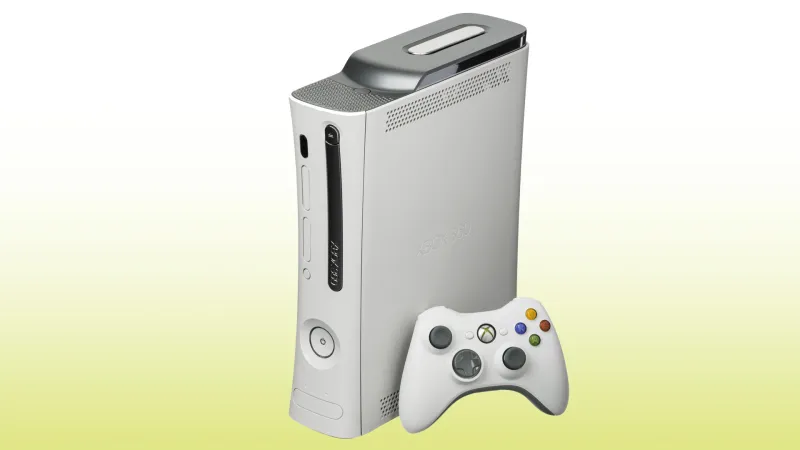
The Big List Of Upcoming Video Game Remakes
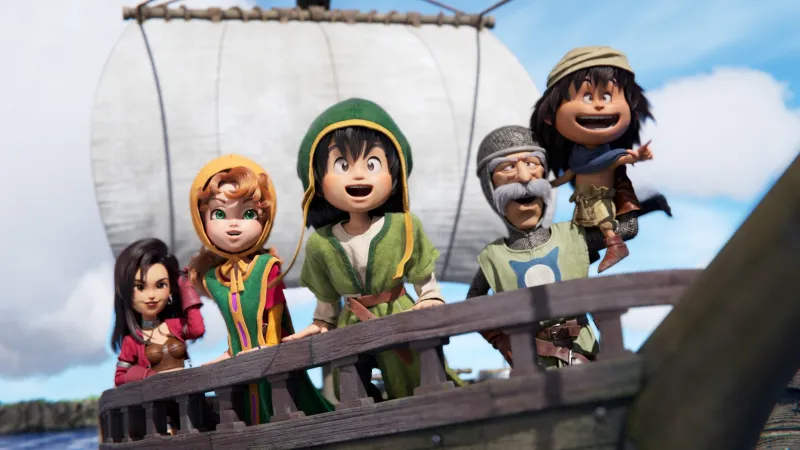
Remakes tend to be more exciting than remasters because the improvements often go beyond mere bumps in resolution or framerate. At best, studios reimagine classic experiences in exciting new ways, sand away rough edges, and somehow retain the intangible x-factors that made fans fall in love with these titles in the first place. At the very least, remakes offer a great way to play antiquated or less accessible experiences on modern hardware.
The remake boom has been in full swing in recent years to the point that it’s starting to get tough to keep track of all the projects in the works. Thankfully, we’ve gathered as many of the announced remakes (not remasters or reboots) that we could find and gathered them in one neat list, arranged chronologically by release window. This will be an evolving list that will be updated as new remakes are announced and released, so be sure to keep an eye on it over the coming months.
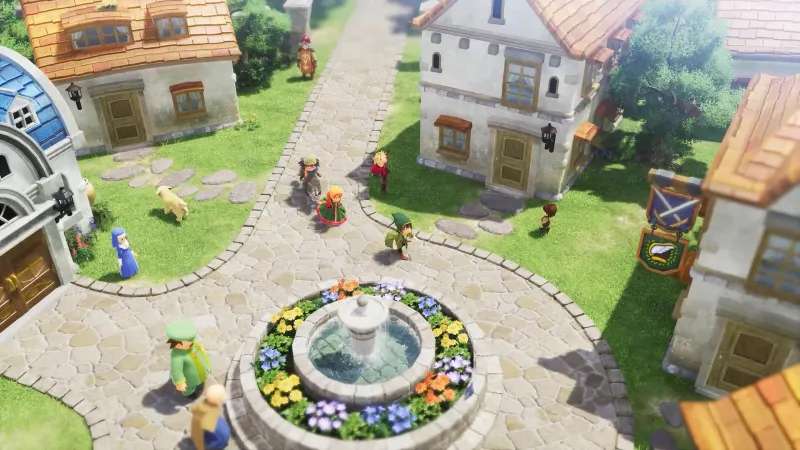
Dragon Quest VII Reimagined
True to its name, Square Enix is reimagining Dragon Quest VII with a gorgeous hand-crafted aesthetic. Sporting a diaroma-inspired look, this new version of the 2000 RPG features revisions to its turn-based battles and Vocation system to make them more dynamic; you can see monsters in the field now, for example. The lengthy story has also been reworked to deliver a more streamlined (but still substantial) narrative.
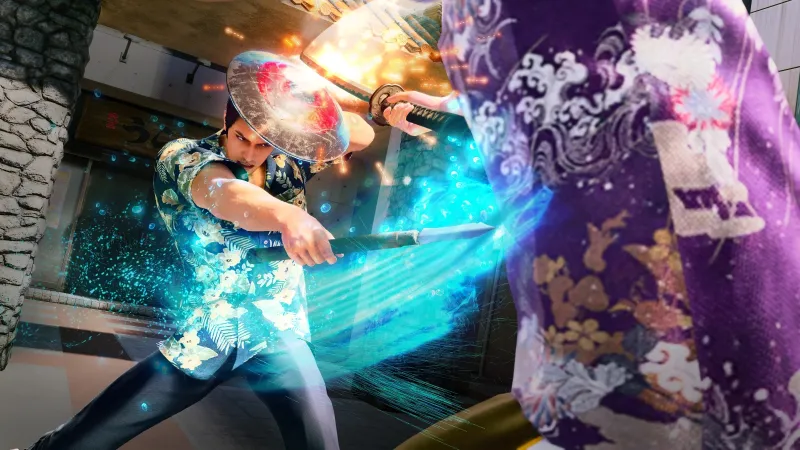
Yakuza Kiwami 3 & Dark Ties
It took over six years since the release of Yakuza Kiwami 2, but 2009's Yakuza 3 is finally getting remade with an unexpected bonus. Kiwami 3 comes packaged with a brand-new story expansion called Dark Ties, a prequel story starring antagonist Yoshitaka Mine. Most long-time fans agree that Yakuza 3 is the entry in most desperate need of a modernized overhaul, so we're happy that developer Ryu Ga Gotoku is finally obliging.
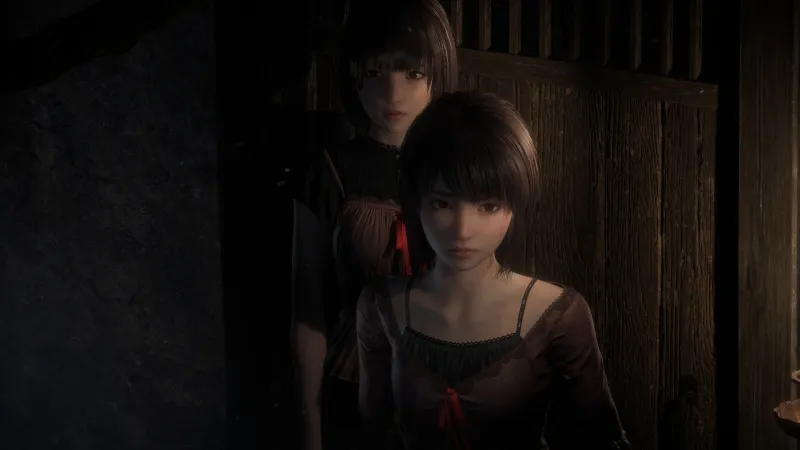
Fatal Frame II: Crimson Butterfly Remake
Fatal Frame is a series you don't hear much about these days, but horror fans hold its second entry, Crimson Butterfly, in high esteem. We're ecstatic to see the 2003 PS2 classic get updated with improved visuals and gameplay, including tweaks to the signature camera-based action, that will make sisters Mio and Maya's harrowing adventure all the more terrifying. The remake's best new addition? Mio and Maya can now hold hands.
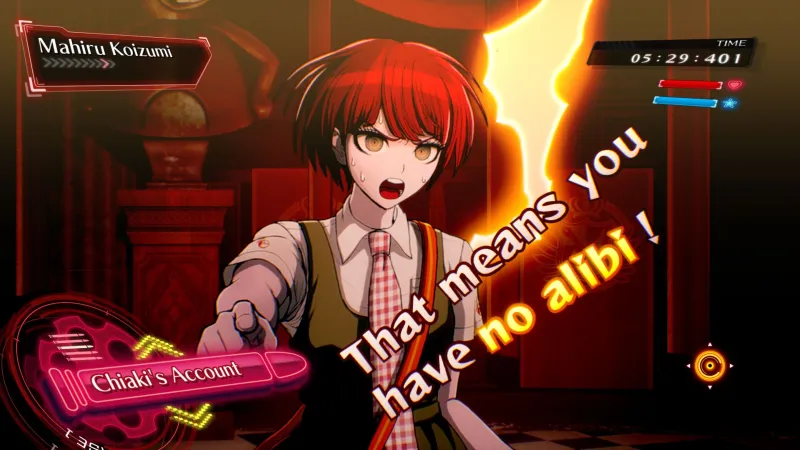
Danganronpa 2x2
This remake of 2012's Danganronpa 2: Goodbye Despair retains the game's original zany story but adds a brand-new scenario for fans to sink their teeth into. The game's cast of classmates returns to endure a mysterious new murder game promised to be as substantial as the existing campaign, which itself has been upgraded with visual enhancements. Monokuma has never been better, and that's likely bad news for his unwilling participants.
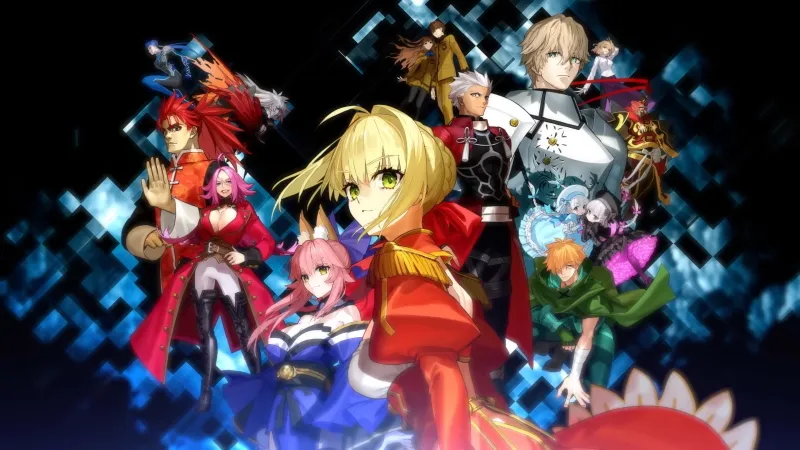
Fate/Extra Record
Record rebuilds Fate/Extra, the first entry in the dungeon-crawling RPG series, with updated character graphics, and a beefier narrative. In terms of gameplay, developer Type-Moon Studio states it features “a more strategic deck-building style of dramatic command battle.” We’re not sure exactly what that last bit means, but given that the original game was released for PSP, it will be nice to have an improved version of the cult title on modern hardware.
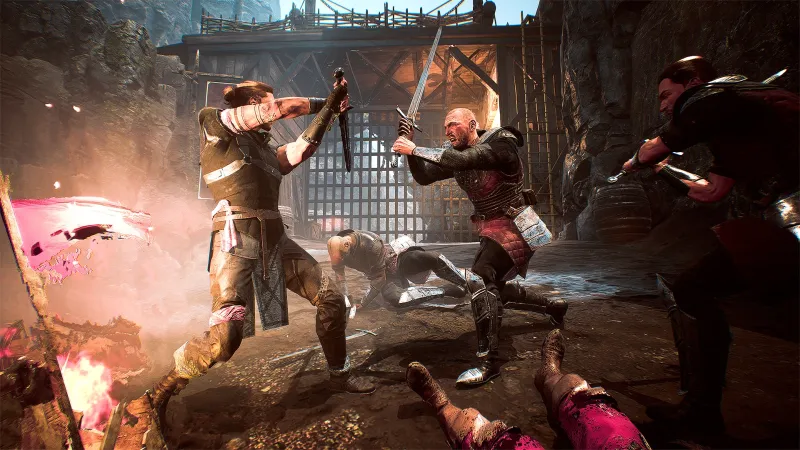
Gothic 1 Remake
2001's Gothic is getting a faithful glow-up that looks to reintroduce the RPG to a new audience. The combat system and control scheme, a criticism of the original, has been reworked to feel modern and, most of all, playable. Developer THQ Nordic Barcelona even released a playable teaser to obtain feedback and ensure it's on the right track. As 20+ year-old game, Gothic has been a tough game to revisit on PC, making this remake all the more welcomed. Eager fans can play a free prologue demo now on Steam.
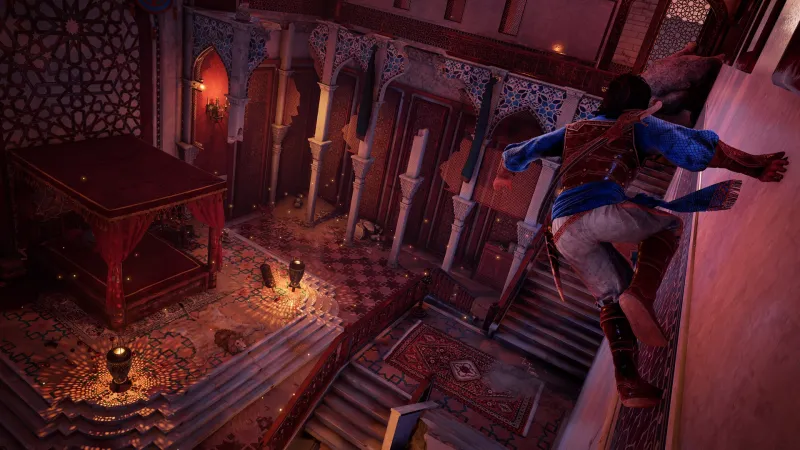
Prince of Persia: The Sands of Time
Development has been rocky for The Sands of Time’s impending remake, to say the least. Besides the game’s reveal garnering backlash from fans due to its unimpressive graphics, it has been delayed several times: first by two months, then indefinitely, and is now coming in 2026. In hindsight, it’s wild to think we were supposed to be playing this in January 2021. In May 2022, Ubisoft announced it had moved development from its fledgling Indian studios back to Montreal, where The Sands of Time was first created. While it's unfortunate that Ubisoft Pune/Mumbai couldn’t bring the remake together, we’re excited to see if Ubisoft Montreal can reapply the same magic.
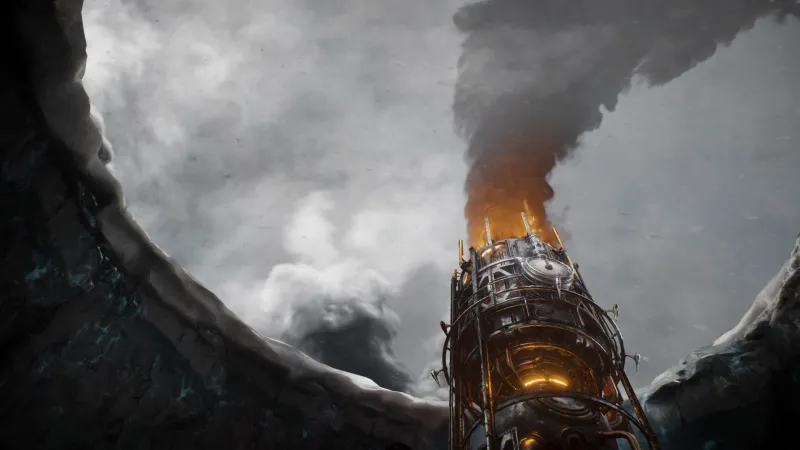
Frostpunk 1886
11 Bit Studios is reimagining its 2018 post-apocalyptic city-management game, moving it into Unreal Engine 5 but offering more than a visual overhaul. Frostpunk 1886 will boast new content, including an entirely new Purpose path and new mechanics and laws. It may seem a bit soon for a remake of Frostpunk, but the game will be nine years old by the time 1886 is scheduled to launch in 2027.
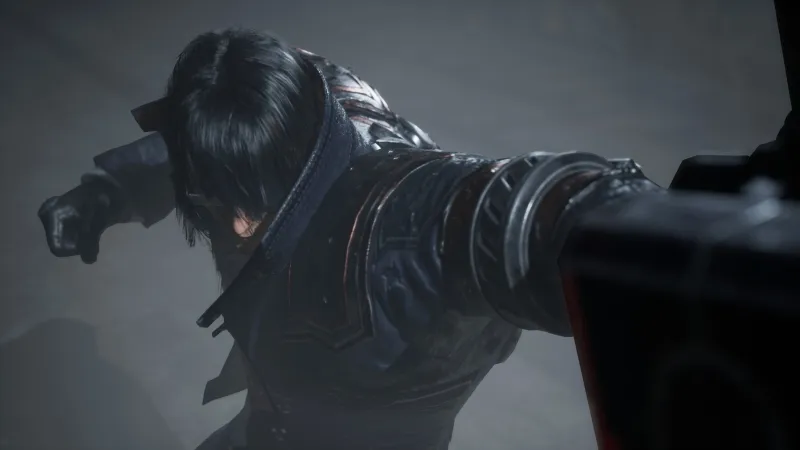
Gungrave G.O.R.E. Blood Heat
Despite only releasing in 2022, Gungrave G.O.R.E. is getting a remake called Blood Heat. Rebuilt entirely in Unreal Engine 5, Blood Heat serves as a redemption of sorts for the poorly received action game by bolstering it with a host of improvements. Upgrades include a revamped and more polished combat system, enhanced cinematics, 360-degree controls, improved enemy AI, and new characters. Here's hoping Gungrave's comeback sticks the landing this time.
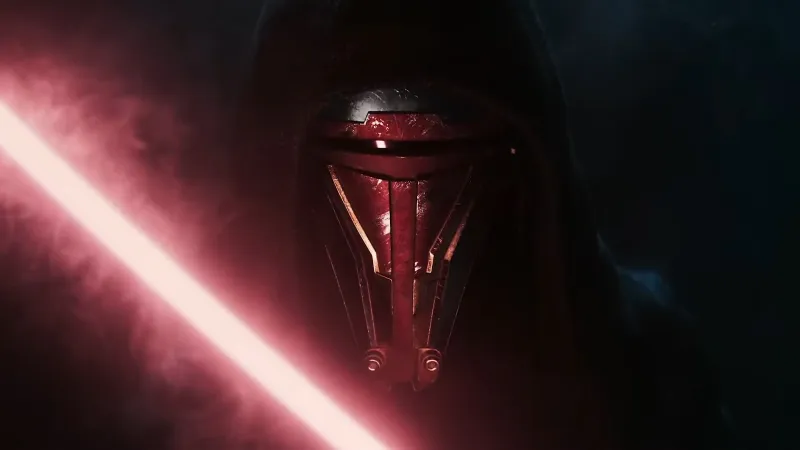
Star Wars: Knights of the Old Republic
The reveal that arguably the best Star Wars game ever was getting a much-needed remake had fans raising their lightsabers in celebration. Unfortunately, the game’s development seemingly succumbed to the dark side after reports surfaced that progress had stalled, and work on the game has switched hands from Aspyr Media to Saber Interactive. The game went radio silent for a long period until Embracer Group sold off Saber, prompting the studio's CEO to confirm that KOTOR is "alive and well". We hope that's the case and look forward to eventually seeing the remake in action.
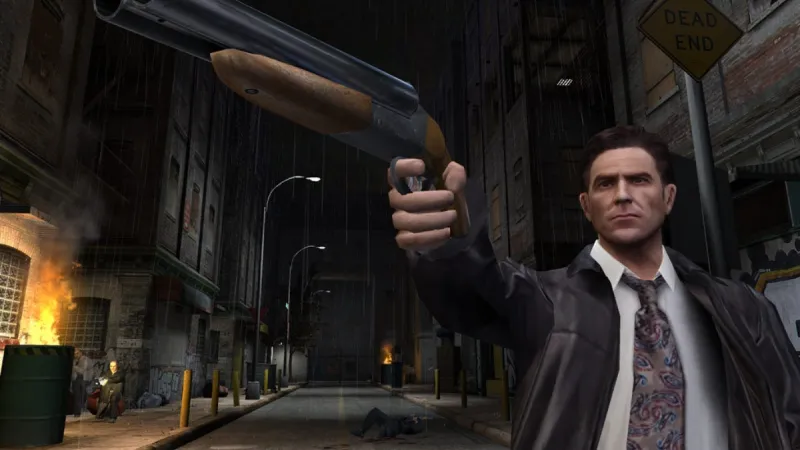
Max Payne 1 and 2 Remake
In April, Remedy Entertainment pleasantly surprised the gaming world when it announced it had struck a deal with Rockstar Games to remake Max Payne and Max Payne 2: The Fall of Max Payne. Remedy sold the IP to Rockstar in 2002, but the two are partnering to revive the gritty crime series that popularized Bullet Time. The project, which will combine both games into a single title, will be made by Remedy with Rockstar footing the bill on development and publishing. It's slated for current-gen consoles and PC.
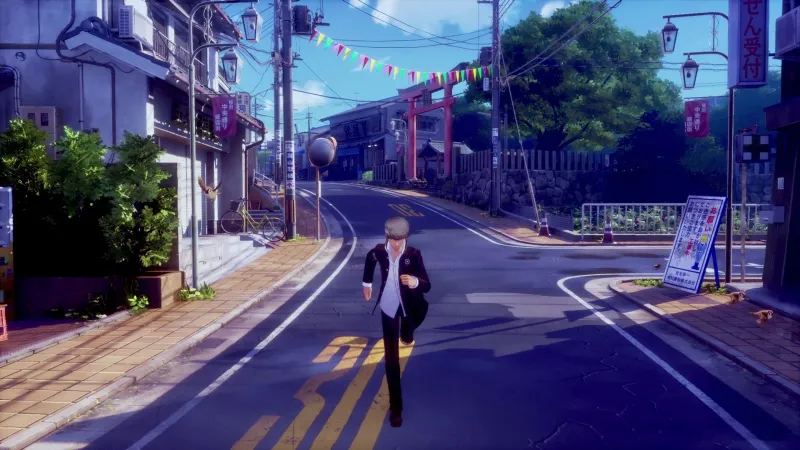
Persona 4 Revival
Persona 5 may be the entry that dominated the mainstream, but the also critically acclaimed Persona 4 set the table and is getting another shot in the limelight. Unfortunately, we don't know how Atlus plans to update the 2008 title; its 2025 reveal trailer announced it as being in early development. Persona 3 Reload is likely the best reference point for what to expect, and we're looking forward to spending dozens of hours hanging with the gang (i.e., fighting demons) in Inaba one more time.
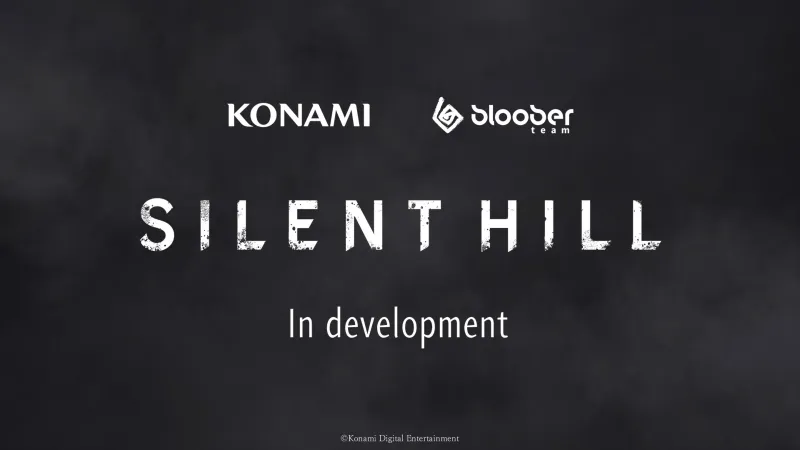
Silent Hill Remake
Bloober Team surprised many by knocking its remake of Silent Hill 2 out of the park. Following that game's positive reception, it's no surprise Konami is entrusting the team to give the same treatment to the 1999 original that first instilled the fear of fog into players. We're excited to see how Bloober Team reinvents Harry Mason's captivating and terrifying search for his missing daughter.
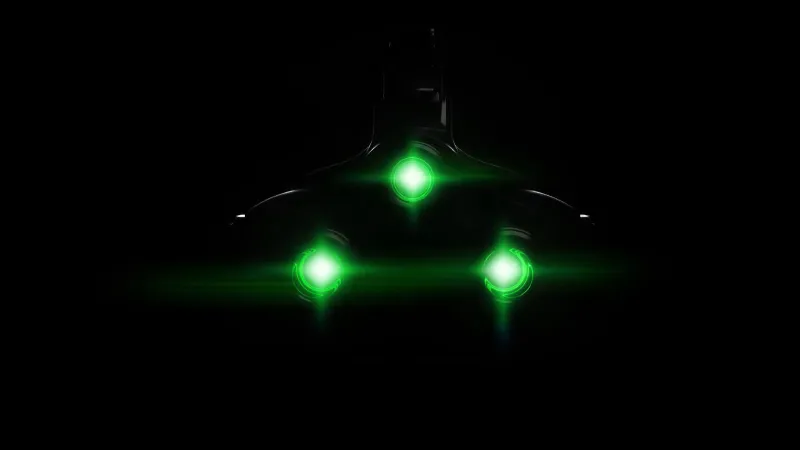
Splinter Cell
It might not be a new entry, but a remake of Sam Fisher’s first outing is better than nothing after years of waiting. Ubisoft Toronto sits at the helm of the project and plans to rebuild the game from scratch using the Snowdrop Engine while maintaining the classic stealth elements. Here's hoping it can recapture and reinvigorate the stealth gameplay that put the franchise on the map over two decades ago.
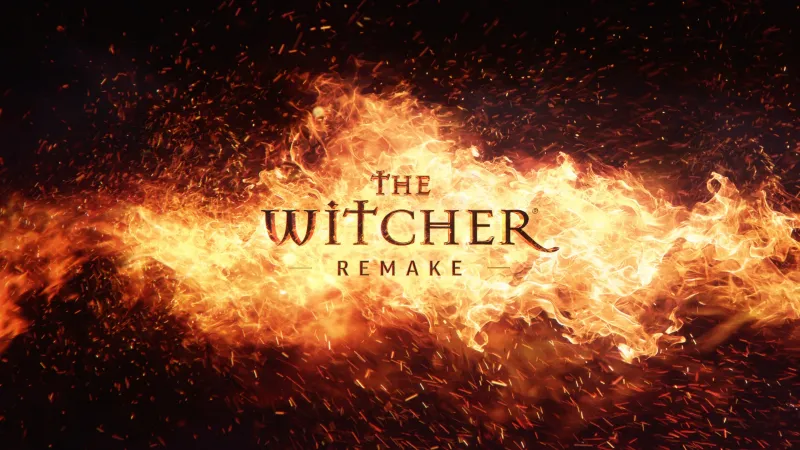
The Witcher
CD Projekt Red’s litany of upcoming projects includes a full remake of the first Witcher game. It’s being built in Unreal Engine 5 by developer Fool’s Theory (with supervision from CD Projekt veterans) and is said to be very early in development. The Witcher, released for PC in 2007, is not an easy game to revisit due to its age and lack of console ports. Now that Geralt and friends are mainstream draws, newer fans can finally experience the adventure that started it all.
Which remakes are you looking forward to playing the most? Let us know in the comments!
